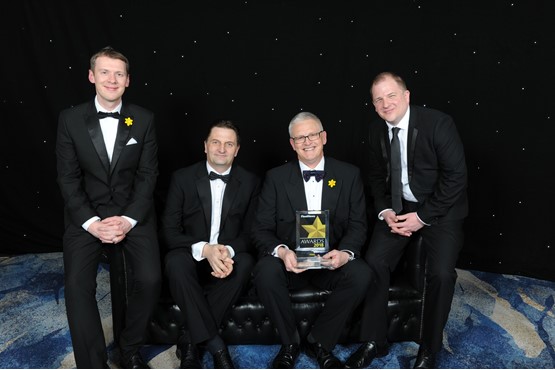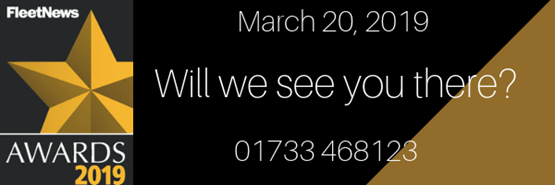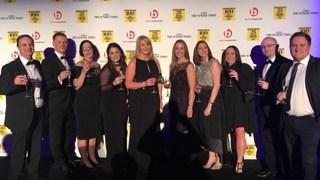After the business was bought in a multi-million pound deal three years ago, FMG continues to go from strength-to-strength. By Gareth Roberts
A continuing focus on customer service has helped FMG secure double-digit growth, increasing its managed fleet from 250,000 to 390,000 vehicles.
However, the incident management and roadside repair and recovery company has no intention of resting on its laurels.
It is constantly looking to enhance operational processes to deliver improvements in the quality and speed of service to fleets.
It uses the latest technology to support drivers and encourage risk or cost-reduction initiatives, while using the data at its disposal to measure industry trends and benchmark customer performance.
Harvey Stead, commercial director at FMG, says: “We’ve been able to adapt our services, because our IT is in-house and is delivered through our operating system, Ingenium.
"It means we’re able to structure a system which allows customers to decide what services they require.”
Three years after its acquisition by the Redde Group, that customer-centric approach also saw it win the customer service award at this year’s Fleet News Awards.
To FMG, outstanding customer service requires an open, honest and transparent approach at all times.
It views customers as strategic partners and works in collaboration to achieve the best results and deliver the optimum service to their fleet, their drivers and all stakeholders.
It says that regular, open, constructive and structured dialogue between key personnel within the business and their counterparts within a customer’s business is vital to ensuring the success of this partnership approach.
It also, according to FMG, helps it stay ahead of the competition. “Our competitors are small divisions of much larger organisations focusing on a range of areas,” says Stead. “Our remit begins and ends with managing a claim and managing a repair.”

Fleet News: How does that shape the service you provide?
Harvey Stead: We meticulously manage the claim. We interact with the driver and the repairer at every stage, providing far more touchpoints than you would receive as a private individual.
For example, we would expect to interact with the repairer several times during the process of a vehicle being repaired, either digitally or verbally, while also keeping the driver informed at every stage.
FN: Why is that important to your fleet customers?
HS: They key thing from our perspective is vehicle off-road time.
If you are not a fleet customer and your repair is delayed by two days, you might not be happy, but it is not the end of the world.
However, if you are a field-based engineer and you are doing six calls that day, and your vehicle is delayed by two days, that really is a problem.
Furthermore, with 35% of our fleet being light commercials, if you’ve got a tail-lift or a refrigeration unit and it’s delayed by two days then that becomes business critical.
FN: Where else have you looked to ensure a tight control over the process?
HS: One of our biggest areas of focus over the past five years has been how we manage the total cost of the claim not simply the damage to our customer’s vehicle.
Third-party intervention and mitigation is crucial to the claims process.
We try to make sure we reduce the costs of the other person involved in an incident when the driver we are responsible for is at fault.
FN: How significant are those third-party costs to your customers?
HS: In a typical incident the damage to our vehicle represents around 20-25% of the total claim cost.
For a large, self-insured fleet or for an insurer, the majority of the costs involved are generated by the innocent person you run into.
By intervening, we can stop these costs escalating.
FN: What does that look like in practice?
HS: We work really closely with our customers to get their drivers to report an incident from the roadside as that enables us to intervene at the earliest opportunity.
Drivers eliciting that third-party data is vital to the process.
FN: You employ a ‘prevention is better than cure’ strategy, taking a proactive approach to preventing incidents happening in the first place. How does that work?
HS: Sometimes it can be the simplest of changes you make to a particular part of your fleet operation that delivers results.
For example, you could have a large van fleet exiting a depot, with vehicles pulling out across a very busy road and turning right, rather than turning left and going 100 yards to a roundabout where they can go around and come back up the road.
It is a question of sitting with a customer and analysing the data, showing where incidents are occurring and identifying the issues then deciding what processes you can put in place to stop the incidents happening in the first place.
FN: Is technology, such as autonomous emergency braking (AEB), helping prevent incidents?
HS: Technology is definitely helping. Over the past five years, we have seen our claims volumes reduce ever so slightly and I think AEB has played a part.
I also think it will continue to drive down the number of incidents as its use becomes more widespread.
In years to come, I think we will consider AEB to have been more beneficial than ABS was 25 years ago, in terms of stopping incidents.
It is especially true when you consider the majority of incidents we deal with are minor damage, low speed collisions.
However, the challenge is when you do have an accident, because of the technology in the vehicles, the repair costs are increasing.
FN: How has the takeover by Redde Group in 2015 helped FMG?
HS: Being part of the group is opening up a number of opportunities we would not have necessarily had.
For example, we see significant potential with manufacturers – an area where our parent company is already strong.
Another advantage is the continued investment in people and technology.
A key part of our proposition has always been flexibility and the ability to invest in our own technology has ensured that flexibility remains, even as the business has grown.
That has helped the company deliver an online portal that gives customers complete transparency over the claims, effectively giving them access to the same proprietary information available to FMG.
It has also allowed the company to widen its reach to include the insurance broker market, which typically serves small-to-medium-sized fleets.
Stead explains: “It’s about continually reviewing our offering and working with fleet management, leasing and contract hire companies so they remain a core part of FMG’s proposition.”
FMG serves 13 out of the top 20 leasing companies by size, but Stead says there is still a significant number of providers that will be looking to the market in the next 12 to 18 months, with which it is keen to engage.
“We never rest on our laurels,” he says. “You always remember the ones that you don’t win, more than ones you do.”
Stead is equally keen to grow its end-user fleet business. In the past few months, FMG has gone live with Anglian Water, Galliford Try and Integral.
“We have secured new customers representing 5,000 new vehicles in the past couple of months and we’re still very focused on direct relationships with large corporate fleets,” says Stead.
“It’s always been about direct fleets, leasing companies, fleet management and insurers; that remains our focus today and it will remain so in the future.”






















Login to comment
Comments
No comments have been made yet.